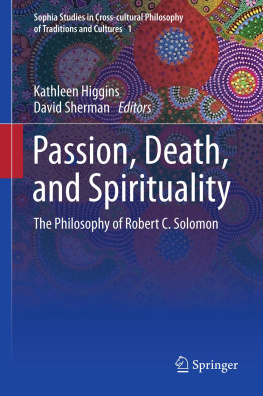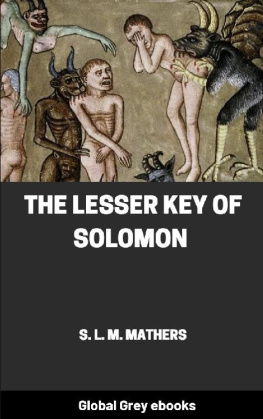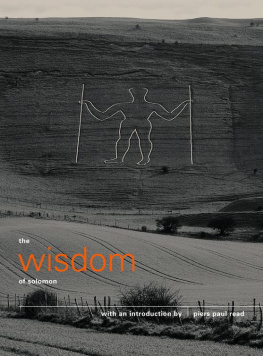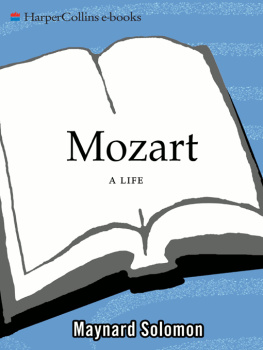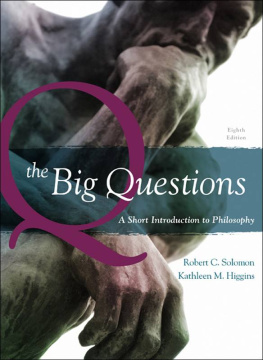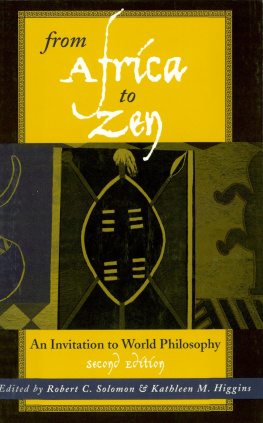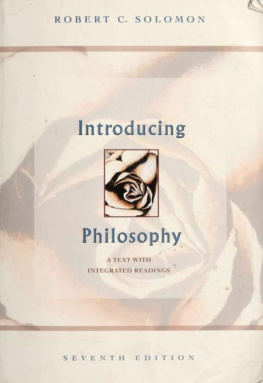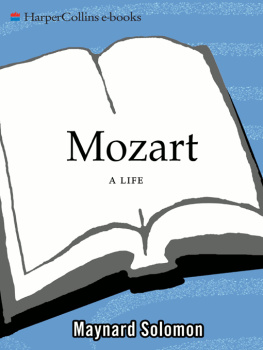No one contributed more to contemporary philosophical discussions of emotion that Bob Solomon. His seminal work in the 1970s helped set the agenda for decades to come, and the arguments he offered in those early works remain as relevant today as they were when they were originally penned. Those of us who came to this discussion in recent years revere Solomon as an intellectual hero. But many of us have also used him as a foil. As so often happens in academe, newcomers try to kill the father, and often then resurrect the grandfather as an alternative. In this case, the grandfather is William James. The last two decades have witnessed a Jamesian turn in emotion theory, and Solomons views are often seen as the polar opposite. Solomon authored some of the most penetrating critiques of the Jamesian approach, and his positive theory of the emotions often looks like a systematic inversion of Jamess core tenets. As a Jamesian, this is how Id seen things, and despite receiving unbelievably gracious support and encouragement from Solomon during my early forays, Id thought of his work as more of a foil than a foundation. I realize now that this was a mistake. Many of Solomons most controversial views strike me as plausible now, not because James was wrong, but because there is room for a reconciliation. Solomon was a leading force in bringing together different disciplines (psychology, anthropology, and philosophy), different generations (historical and contemporary sources of influence), and different philosophical traditions (analytic and continental). It turns out that he was also prescient in seeing how the most ostensibly antithetical theories of emotion might find some common ground. This is the most important of many philosophical lessons I learned from him, not only because it is crucial for understanding emotions, but because it serves as a reminder, in this polarizing field, that the best solution to many of our debates is collaboration.
In what follows, I begin by presenting some of the central themes in Solomons theory of the emotions, focusing on his groundbreaking 1973 paper, but updating where appropriate. I indicate how these themes depart from the position advanced by James. Then, in the second part, I argue that the Jamesian should not reject Solomons arguments, but rather accommodate them, and I will suggest that his considered view can be regarded as integrative as well.
Solomon Contra James
In , James published his first and most influential discussion of the emotions. There he defends a view that is sometimes called sensationalism . According to James, emotions are felt sensations of changes that take place in the body. When we experience an emotionally evocative event, our bodies prepare for a behavioral response, and the feeling of those preparations is the emotion. When we encounter a bear in the wilderness, to use a Jamesian paradigm case, our bodies prepare for flight, our hearts race, we perspire, and we get goose bumps (a vestige from hairier ancestors whose goose bumps caused hair to erect, giving rise to a larger appearance in the eyes of predators). The emotion of fear is a sensation comprising this somatic pattern.
James based this account on two central observations. The first is phenomenological. James asks readers to imagine an intense emotion, such as rage or terror, and then systematically subtract in our minds all its bodily symptoms. If we try this exercise, James says, we will find that there is nothing left that we would recognize as an emotion. The phenomenology of emotion is fundamentally bodily. The second observation is more or less empiricalit was speculative in Jamess time but has since been tested and confirmed. When we change the configuration of our bodies, our emotions seem to change as well. James combated his own depression by adopting an erect posture and a smile, methods known now to enhance mood. If bodily changes can change our emotions, then, James concludes, emotions may be sensations of such changes. These arguments continue to persuade some contemporary emotion researchers and have been buffered by empirical work linking emotional responses to brain structures that are involved in the perception of bodily changes (Damasio ).
Jamess theory of the emotions captivated philosophers and psychologists when it first appeared, and it became a dominant theory until 40 years later, when Walter Cannon () endorses this critique, which has often received inadequate attention by contemporary followers of James.
It should be noted, however, that the critique is less decisive than it may appear. First, some forms of bodily perception, such as heart rate, can be quite accurate and fast. Second, the fact that some visceral nerves are slow does not undermine the Jamesian theory, because emotions sometimes come on slowly, and because emotional experiences may begin as soon as the brain anticipates changes in the body, even if such changes have not yet taken place or been perceived. Third, the fact that stimulating an organ does not cause an emotional sensation can be explained by the fact that emotions involve whole patterns of bodily change. The stimulation of one organ alone would not suffice. This also speaks to the questions of differentiation. A rapid heart rate would not be enough to distinguish fear and euphoria, since both involve cardiovascular acceleration. But fear also characteristically involves a muscle tension (part of the freezing response), widened eyes, and tingling spine. And euphoria causes flushing rather than pallor, and the lips turn upward rather than down. Inducing such global patterns of change can indeed cause felt changes in the emotions. Indeed, facial expressions (Laird ) may be enough to differentiate basic emotions. So the case against James cannot hang on Cannons critique. Solomon certainly wouldnt make this mistake. His central objections to James have little to do with physiology. Rather, he defends a positive theory of his own, which seems to conflict with sensationalism in multiple ways.
Solomons approach to the emotions is inspired by Sartre rather than James. His overarching claim is that emotions are judgments, not sensations. James is a non-cognitivist. That is, he thinks cognitive states are unnecessary for emotions. An emotion can be triggered by a perceptual experience (seeing a bear), and consist in somatic sensations. A creature without thoughts could emote. For Solomon, emotions are fundamentally cognitive: they are judgments about states of affairs in the world, such as the judgment that the bear is dangerous. This can be called judgmentalism . Like James, Solomon cites phenomenological evidence. His paradigm case is anger, which he associates with the judgment that there has been an offense. He invites us to imagine being angry with no such judgment, and concludes that this impossible. It would be paradoxical, in a Moorian way, to say, I am angry at you, but I dont think youve done anything wrong.

